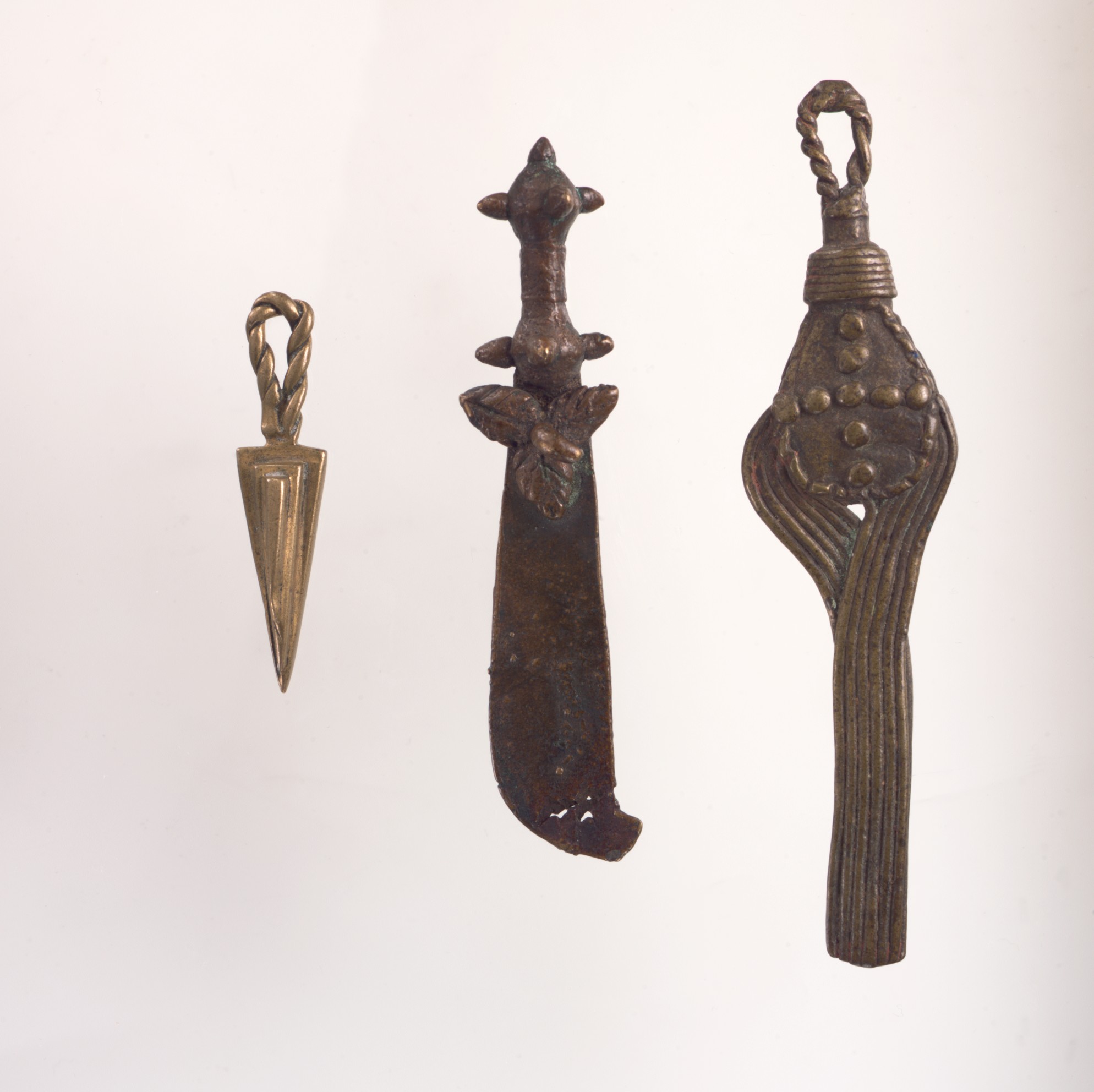Gold Weight: Amulet
Not on view
Cast brass gold weights, known as abrammuo (sing. mrammuo), were developed by Akan merchants and rulers to standardize the trade in gold dust from mines in present-day Ghana in networks of exchange that extended beyond the Sahara Desert. Domestically, gold was valued by the Akan kings for its decorative and symbolic qualities. Aside from bringing enormous wealth to the Akan kingdoms through trade, gold was considered the earthly counterpart to the sun and an incarnation of kra, or life force, and was incorporated into a wide spectrum of courtly paraphernalia. While the earliest gold weights from the fifteenth century displayed abstract or geometric motifs inspired by North African Islamic traditions, later weights from the seventeenth century onward were figurative in design. Some take their imagery from royal accoutrements, likely in reference to the Akan kings' increasing involvement in the regulation of the trade at this time.
This weight represents a type of triangular amulet worn by the king for protection, especially at times of war. Such amulets, constructed from Qur'anic texts folded and encased in leather, are evidence of the cosmopolitan nature of the Akan courts' engagement with the outside world through trade.
Due to rights restrictions, this image cannot be enlarged, viewed at full screen, or downloaded.
This artwork is meant to be viewed from right to left. Scroll left to view more.



